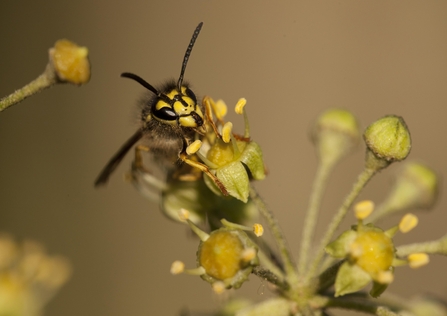When we talk about wasps, most of us probably think of the common wasp with black and yellow stripes warning us to keep clear. Even its scientific name, Vespula vulgaris, sounds foreboding. However, the common wasp is just one of more than 9,000 species of wasp in the UK, with the vast majority quietly going about their insect business.
Do we need wasps?
There was a discussion on the bus into the office recently, prompted by an influx of wasps through the open windows. The essence of the conversation was that we’ve got bees for pollination, so wasps are unnecessary.
While the common wasp does have a role in pollination, often transferring pollen while seeking out nectar, it has an important job controlling other invertebrates. Without wasps, we’d be knee-deep in aphids, caterpillars, and flies. They earn the accolade of being the gardener’s friend.
While the wasp larvae are developing in the nest, the adult wasps feed them insects as a high protein food. They also feed on a sugary liquid called honeydew which is excreted by aphids.



